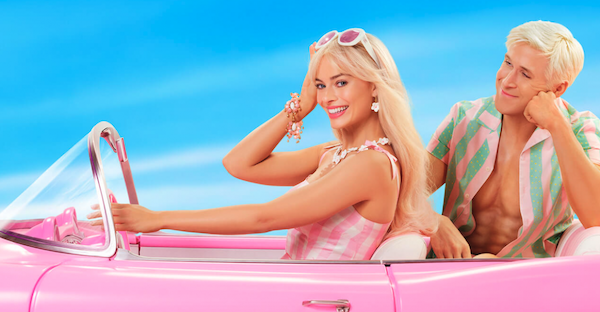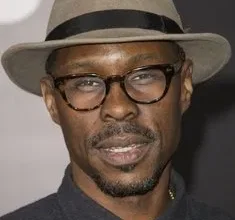“Barbie (Film): A Bold Reimagination of an Iconic Doll in a Cinematic World”

Introduction: The Unlikely Arrival of a Barbie Blockbuster
Let’s be honest—when you first heard that a Barbie movie was coming, did you expect anything more than a sugary, pink-coated kid’s flick? That’s what many of us thought. But Barbie (2023), directed by Greta Gerwig, completely subverted expectations. It’s not just a film about dolls in dreamhouses; Barbie (film) it’s a sharp, vibrant, and emotionally rich commentary on identity, feminism, and societal norms, all wrapped in a sparkling layer of pop culture references and visual flair.
From the moment the teaser trailer dropped with a parody of 2001: A Space Odyssey, audiences could tell this wasn’t your average children’s movie. What we got instead was something thoughtful, funny, satirical, and full of heart. Barbie (film) this article dives deep into what makes Barbie such a standout film—from its clever script and brilliant performances to the cultural impact it’s made worldwide.
The Vision Behind the Film: Greta Gerwig’s Unexpected Genius
:max_bytes(150000):strip_icc():focal(659x189:661x191)/Barbie-010323-bb98515881e24793ae33c7fd4f777f0b.jpg)
Greta Gerwig, best known for her indie-style storytelling in Lady Bird and Little Women, might have seemed like an odd choice for a Barbie movie at first. Barbie (film) But her ability to blend emotional realism with quirky, engaging characters turned out to be the perfect fit. Gerwig didn’t just direct Barbie—she co-wrote the screenplay with Noah Baumbach and shaped the entire film into a layered narrative that touches on both personal growth and societal critique.
One of Gerwig’s strongest decisions was to humanize Barbie, a doll who historically represented unattainable perfection. Barbie (film) Instead of portraying her as flawless, Gerwig gave Barbie insecurities, existential crises, and moments of doubt—turning her into a relatable character on a genuine journey of self-discovery. Barbie (film) this not only deepened the storyline but gave the audience something real to connect with.
Gerwig also infused the film with satire and self-awareness. The movie doesn’t shy away from acknowledging the criticisms Barbie has faced over the years, including unrealistic body standards and outdated gender roles. Instead, Barbie (film) it leans into these discussions, presenting them with humor and depth, inviting audiences of all ages to rethink what Barbie stands for.
Plot Breakdown: More Than Just Plastic Dreams
The story of Barbie (film) is both whimsical and surprisingly philosophical. Barbie lives in Barbieland—a matriarchal utopia where all Barbies are empowered, successful women and Kens are just accessories. Everything seems perfect until Barbie begins experiencing an identity crisis—she starts thinking about death and develops flat feet (a crisis for any Barbie!).
To fix herself, she ventures into the “Real World,” accompanied by Ken, played hilariously by Ryan Gosling. What follows is a fish-out-of-water comedy mixed with social commentary, as Barbie realizes the real world is far more complex—and far less kind—than her pink paradise. Meanwhile, Ken discovers patriarchy and tries to bring it back to Barbieland, causing chaos.
The film cleverly flips tropes and stereotypes on their heads. While Barbie struggles to find her purpose, Ken goes on his own misguided journey of empowerment, eventually learning the meaning of individuality beyond being Barbie’s plus-one. Barbie (film) the dual arcs reflect broader themes of identity, purpose, and balance between genders—not something you’d expect from a movie based on a doll.
Cast and Characters: Perfectly Plastic and Powerfully Human
One of the strongest elements of Barbie (film) is its stellar cast. Margot Robbie was born to play Barbie. She brings charm, vulnerability, and humor to a role that could’ve easily fallen flat. Her ability to express existential dread while wearing a hot-pink jumpsuit is nothing short of impressive. Robbie’s performance elevates Barbie from a brand mascot to a fully-realized protagonist.
Ryan Gosling, as Ken, is the comedic backbone of the film. His transformation from sidelined himbo to self-aware character adds layers of unexpected depth. Gosling nails the role with hilarious physical comedy and musical numbers (yes, “I’m Just Ken” lives rent-free in all our heads), but also shows emotional vulnerability as Ken grapples with his purpose.
The supporting cast adds even more color to the narrative. Barbie (film) America Ferrera delivers a standout monologue about the impossible expectations placed on women, serving as one of the emotional high points of the movie. Simu Liu, Kate McKinnon (as Weird Barbie), Issa Rae, and others bring diverse personalities that enrich the Barbieland world and keep the pace fun and unpredictable.
Themes and Messages: Feminism, Identity, and Finding One’s Place
At its core, Barbie (film) is a story about what it means to be human. While it’s presented with candy-colored visuals and plenty of humor, the emotional and thematic core is surprisingly profound. The film addresses feminism in a fresh way—not by preaching, but by showcasing how both men and women are boxed in by societal expectations.
Barbie’s journey is about letting go of perfection and embracing her imperfections. Her existential questions mirror those we all ask at some point: Who am I without the labels? What am I here for? Can I be more than what I was made to be? These ideas resonate with people across generations.
Ken’s arc also explores masculinity in a meaningful way. His realization that he doesn’t need to define himself by dominance or power, and that his value isn’t tied to Barbie, reflects a changing conversation around male identity in today’s culture.
What’s brilliant is that Barbie handles these heavy topics without feeling preachy.Barbie (film) the blend of humor, heart, and satire makes the messaging feel organic and accessible, especially to younger viewers who might be learning these ideas for the first time.
Visual Style and Aesthetic: A Pink-Tinted Dream
Visually, Barbie is a treat. The production design is meticulous, playful, and endlessly creative. From the plastic-like surfaces of Barbieland to the blocky, toy-inspired vehicles and outfits, every detail reflects the whimsical world we all imagined as kids playing with dolls.
The costume design, led by Jacqueline Durran, deserves special mention. Barbie (film) it pays homage to decades of Barbie fashion, pulling from vintage looks, iconic doll outfits, and bold modern styles. The use of bright pinks, pastels, and vibrant patterns creates a visual identity that’s instantly recognizable and full of joy.
Even the choreography, musical sequences, and set pieces play into the larger-than-life aesthetic. Everything feels like a celebration—of femininity, of color, of creativity. It’s a rare movie that’s just as fun to look at as it is to think about.
Cultural Impact and Box Office Success
The Barbie movie wasn’t just a hit—it was a phenomenon. Released in July 2023 alongside Oppenheimer, the two films launched the viral “Barbenheimer” craze. But despite being part of a meme, Barbie proved it had lasting value and mass appeal. Barbie (film) It became one of the highest-grossing films of the year, breaking records for female-directed movies and showing that audiences are hungry for smart, female-led storytelling.
Beyond the box office, Barbie sparked widespread discussions online and offline about gender dynamics, childhood nostalgia, and media representation. Brands launched pink-themed promotions, theaters were flooded with moviegoers dressed in Barbiecore fashion, and memes flooded every corner of the internet. It wasn’t just a film—it was a cultural event.
Importantly, it opened doors for more diverse, original storytelling in mainstream cinema. Barbie proved that a film can be commercially successful, visually appealing, and intellectually stimulating all at once.
Final Thoughts: Barbie Is More Than a Doll—She’s a Mirror
So, what does Barbie (film) leave us with? A fresh appreciation for a cultural icon, a handful of laughs, a few tears, and a conversation worth continuing. Greta Gerwig managed to take something so familiar and turn it into something meaningful. Whether you’re a lifelong Barbie fan or someone who never gave the doll a second thought, this film has something to say to you.
It’s funny, thoughtful, dazzling, and surprisingly deep. And most importantly—it shows that everyone, even a plastic doll in heels, deserves the right to choose who they want to be



